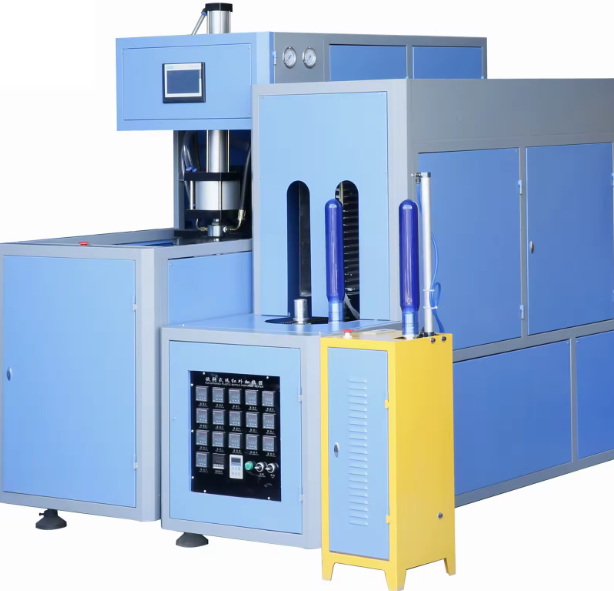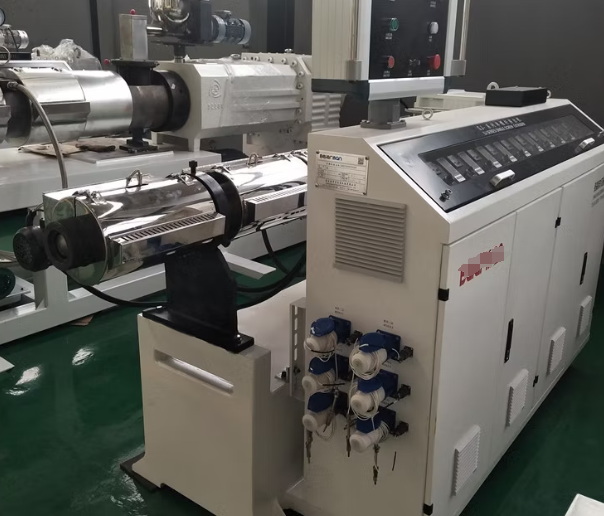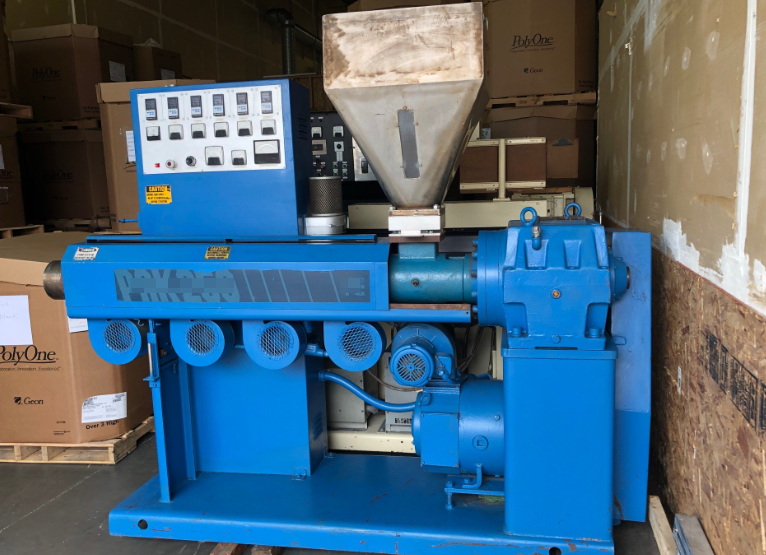Content Menu
● Introduction to Extrusion Spheronization
>> Alternative Terms for Extrusion Spheronization Equipment
● Steps in Extrusion Spheronization
>> 1. Mixing or Granulation
>> 2. Extrusion
>>> Types of Extruders
>> 3. Spheronization
>> 4. Drying
>> 5. Coating (Optional)
● Applications of Extrusion Spheronization
● Equipment Used in Extrusion Spheronization
>> Alternative Terms for Equipment
● Parameters Influencing Pellet Quality
>> Formulation Parameters
>> Equipment Parameters
>> Process Parameters
● Advantages of Extrusion Spheronization
● Challenges and Future Developments
● Conclusion
● FAQ
>> 1. What are the main steps in the extrusion spheronization process?
>> 2. What types of extruders are commonly used?
>> 3. What is the role of the friction plate in spheronization?
>> 4. What are the advantages of using extrusion spheronization in pharmaceuticals?
>> 5. What are some alternative terms for extrusion spheronization equipment?
● Citations:
Extrusion spheronization is a multi-step process used to create uniform spherical particles, known as spheroids or pellets, which are widely used in pharmaceuticals, agrochemicals, and other industries. This process involves several key steps: mixing, extrusion, spheronization, drying, and sometimes coating. In this article, we will delve into the workings of extrusion spheronization equipment and explore its applications.

Introduction to Extrusion Spheronization
Extrusion spheronization is a technique that transforms wet mass into uniform spherical particles. It is particularly valuable in the pharmaceutical industry for producing controlled-release drug delivery systems. The process ensures that the resulting pellets have a smooth surface, uniform size, and good flow properties, which are essential for accurate dosing and efficient drug delivery.
Alternative Terms for Extrusion Spheronization Equipment
The terms spheronization, marumerization, and pelletization are often used interchangeably to describe the process of creating spherical particles. Other alternative terms include extrudate, spheroids, micro-spheres, and pharmaceutical pellets. These terms refer to the same process and products, differing mainly in industry-specific contexts.
Steps in Extrusion Spheronization
1. Mixing or Granulation
The first step involves mixing dry ingredients with a liquid to form a homogeneous wet mass. This wet mass must have optimal plasticity and cohesiveness to facilitate the extrusion process. The mixing process typically involves the use of a high shear granulator to ensure uniform distribution of the active pharmaceutical ingredient (API) and excipients.
2. Extrusion
In this step, the wet mass is forced through an extruder, which shapes it into cylindrical rods called extrudates. The size of these extrudates depends on the diameter of the extruder's openings. There are several types of extruders, including screw extruders, sieve extruders, basket extruders, and roll extruders, each with its own advantages and applications.
Types of Extruders
- Screw Extruder: Uses a screw mechanism to push the wet mass through the extrusion openings.
- Sieve Extruder: Forces the mass through a screen, creating uniform extrudates.
- Basket Extruder: A versatile method using a screen basket for extrusion.
- Roll Extruder: Uses rollers to push the material through the extrusion openings.
3. Spheronization
The extrudates are then placed in a spheronizer, where they are broken into smaller segments and rounded into spheres through continuous collisions with the friction plate and the bowl walls. The spheronizer's friction plate plays a crucial role in shaping the pellets, with different groove designs affecting the final product's quality.
4. Drying
After spheronization, the pellets are dried to achieve the desired moisture content. This step is crucial for maintaining the structural integrity of the pellets. The drying method can vary, including air drying or using specialized drying equipment.
5. Coating (Optional)
Some pellets may undergo coating to achieve controlled release properties or enhance stability. Coating can be applied using various techniques, such as Wurster fluidization, which offers precise film coating capabilities.
Applications of Extrusion Spheronization
Extrusion spheronization is primarily used in the pharmaceutical industry for producing multiparticulates for oral controlled drug delivery systems. It offers advantages such as uniform particle size, high drug loading capacity, and good flow properties, making it ideal for sustained-release formulations. Additionally, this technique is used in agrochemicals, catalysts, and specialty chemicals where uniform pellets are desired.

Equipment Used in Extrusion Spheronization
The key equipment includes mixers, extruders, spheronizers, dryers, and coaters. Each piece of equipment plays a critical role in ensuring the quality and consistency of the final product.
Alternative Terms for Equipment
- Spheronizer: Also known as a marumerizer or pelletizer.
- Extruder: May be referred to as an xtruder, extuder, or estruder.
Parameters Influencing Pellet Quality
Several factors can affect the quality of pellets produced by extrusion spheronization, including:
- Formulation: Moisture content, granulating liquid, excipients, and drugs.
- Equipment: Type of mixer, extruder, friction plate, and extrusion screen.
- Process Parameters: Extrusion speed, spheronization time, and drying method.
Formulation Parameters
The ratio of liquid to solid and the choice of granulating liquid are crucial for achieving optimal extrudate quality. The presence of microcrystalline cellulose can enhance the quality of extruded pellets by improving their mechanical strength and flow properties.
Equipment Parameters
The type of extruder used can significantly impact the quality of the extrudates. For instance, screw extruders are commonly used in pharmaceutical applications due to their ability to produce consistent extrudates with minimal force.
Process Parameters
Extrusion speed and spheronization time are critical process parameters. Increasing the extrusion speed can lead to surface impairment and lower pellet quality, while spheronization speed affects the sphericity and hardness of the pellets.
Advantages of Extrusion Spheronization
Extrusion spheronization offers several advantages over other pelletization techniques:
- High Drug Loading: Pellets can achieve high drug loading capacities, often up to 95% API.
- Uniform Size Distribution: The process produces pellets with a narrow size distribution, which is beneficial for controlled release formulations.
- Smooth Coatable Surface: The spherical shape and smooth surface of the pellets facilitate effective coating.
- Improved Flow Properties: Pellets have good flow properties, making them easier to handle and process.
Challenges and Future Developments
Despite its advantages, extrusion spheronization is a multi-step process that can be labor-intensive. There is ongoing research to improve efficiency and reduce processing steps. Alternative techniques like rotogranulation offer potential but are not yet widely adopted due to equipment costs and availability.
Conclusion
Extrusion spheronization is a versatile technique for producing uniform spherical particles with high drug loading capacity and controlled release properties. Understanding how this equipment works is crucial for optimizing the process and achieving desired product characteristics.

FAQ
1. What are the main steps in the extrusion spheronization process?
- The main steps include mixing, extrusion, spheronization, drying, and sometimes coating.
2. What types of extruders are commonly used?
- Common types include screw extruders, sieve extruders, basket extruders, and roll extruders.
3. What is the role of the friction plate in spheronization?
- The friction plate breaks the extrudates into segments and helps round them into spheres through continuous collisions.
4. What are the advantages of using extrusion spheronization in pharmaceuticals?
- It offers uniform particle size, high drug loading capacity, and controlled release properties.
5. What are some alternative terms for extrusion spheronization equipment?
- Terms include spheronizer, marumerizer, pelletizer, and variations like xtruder or estruder.
Citations:
[1] https://www.glatt.com/technologies/pelletizing/extrusion-spheronization/
[2] https://www.sphinxsai.com/Oct_dec_2010_vol2_no.4/PharmTech_vol2_no.4_1_pdf/PT=44%20(2429-2433).pdf
[3] https://pmc.ncbi.nlm.nih.gov/articles/PMC2750681/
[4] https://ijppr.humanjournals.com/wp-content/uploads/2022/05/15.Raviteja-G-V-Panner-Selvam-R-Vineeth-Chandy.pdf
[5] https://www.linkedin.com/pulse/benefits-extrusion-spheronization-answering-your-questions-ujg8e
[6] https://drug-dev.com/wp-content/uploads/2022/09/Bora-Whitepaper.pdf
[7] https://www.senieer.com/extruder-and-spheronizer-machine-a-comprehensive-guide/
[8] https://www.caleva.com/knowledge-base/extrusion-spheronization-a-promising-pelletization-technique-in-depth-review
[9] https://www.pharmtech.com/view/advancements-extrusion-spheronization
[10] https://www.pharmamanufacturing.com/production/unit-operations/article/11363493/drug-delivery-and-solid-dosage-forms-improving-control-of-the-extrusion-spheronization-process-pharmaceutical-manufacturing
[11] https://boracdmo.com/how-extrusion-spheronization-can-help-to-control-delivery-and-enhance-performance-of-complex-therapies/
[12] https://trends.medicalexpo.com/vj-instruments/project-300876-445014.html
[13] https://www.caleva.com/knowledge-base/a-brief-non-technical-guide-to-spheronization-marumerization
[14] https://www.caleva.com/products/100kg-throughput-per-hour-pellet-extrusion-spheronization-system
[15] https://www.contractpharma.com/extrusion-spheronization-in-osd-manufacturing/
[16] https://www.umangpharmatech.com/Pelletization-by-Extrusion-Spheronization-Technique.html
[17] https://core.ac.uk/download/pdf/48655868.pdf
[18] https://journals.innovareacademics.in/index.php/ijap/article/download/37277/23073?inline=1
[19] https://www.mdpi.com/1999-4923/11/4/154
[20] https://pmc.ncbi.nlm.nih.gov/articles/PMC3011062/
[21] https://www.hmicronpowder.com/wp-content/uploads/2015/02/Pelletizing-Technology.pdf
[22] https://www.caleva.com/knowledge-base/adsorption-and-absorption-in-extrusion-spheronization
[23] https://xtalks.com/webinars/extrusion-and-spheronization-process/
[24] https://ijppr.humanjournals.com/extrusion-spheronization-and-the-recent-advancements-in-pellets/
[25] https://www.vjinstruments.com/blog/about-extrusion-spheronization/
[26] https://yiqi-oss.oss-cn-hangzhou.aliyuncs.com/aliyun/900101244/technical_file/file_811712.pdf
[27] https://pubmed.ncbi.nlm.nih.gov/27396400/
[28] https://www.ijpsonline.com/articles/application-of-quality-by-design-principles-for-optimizing-process-variables-of-extrusion-and-spheronization-of-a-captopril-pellet-3809.html
[29] https://globalresearchonline.net/journalcontents/v27-1/39.pdf






















